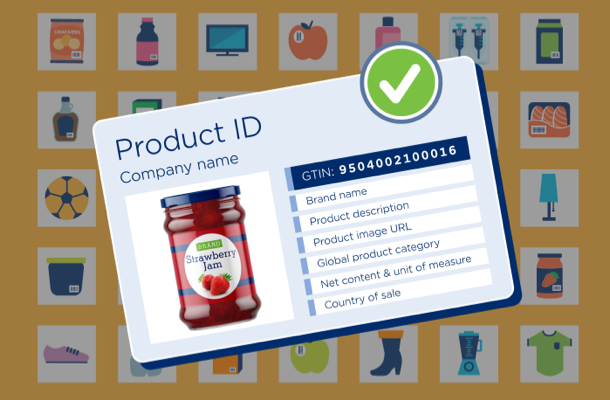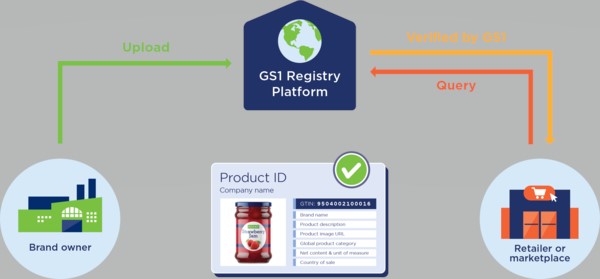Get product identity right
|
Verified by GS1 is a single, neutral registry of basic product data and attributes, used globally by online marketplaces, brand owners and retailers to solve challenges including product duplication, incorrect data and counterfeiting. All companies across the commerce ecosystem are benefitting from Verified by GS1 through accessing the accurate, consistent and reliable product data of millions of products world-wide and growing fast. |
|
How does Verified by GS1 work?
Verified by GS1 is an ID card for products, similar to a driver’s licence or passport for people. The identity of a packaged product is authenticated using seven key attributes. Product information is held within the GS1 Registry Platform and is maintained by the brand owner.
|
Key attributes
|
|
Benefits
| Retailers & Marketplaces | Brand Owner |
|
Until now, retailers have had to use complex algorithms and manual processes to cross-check GTINs from different data sources, leading to significant waste, confusion and costly errors. For retailers and marketplaces, this reinforced foundation of the product data ecosystem drives operational efficiencies and ultimately increases sales.
|
This new product data foundation offers brand owners greater control over their basic product data and global visibility for their products. They now have complete visibility into the quality of the core data for all their products around the globe, and access to analytics and insights they can use to improve the quality of the data in their systems.
|


